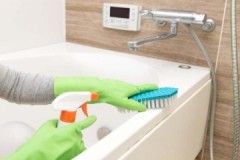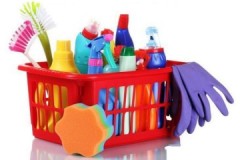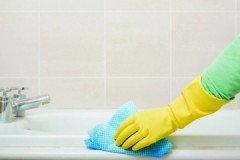Moidodyr's advice on how and how to clean the bath from yellow plaque at home
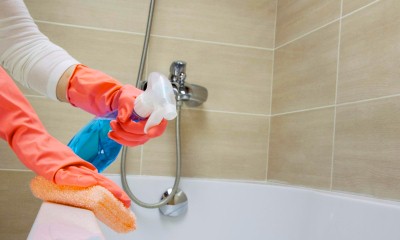 The increased amount of mineral impurities in tap water contributes to the gradual formation of yellow plaque on the surface of the bath.
The increased amount of mineral impurities in tap water contributes to the gradual formation of yellow plaque on the surface of the bath.
To remove it and return the plumbing to its previous cleanliness, use home remedies and household chemicals. The choice of cleaner, as well as the technology of work, depends on the material of the bowl.
How to clean a cast-iron, enameled, acrylic bath from yellow plaque at home, we will tell you in the article.
Content
How to remove yellowness with improvised means?
Folk methods help to cope with yellowness no worse than store-bought bleaches.
Soda and peroxide
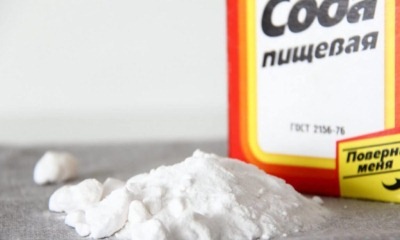 Sodium bicarbonate has good cleansing properties. To speed up and enhance the cleaning, it is recommended to use hydrogen peroxide in conjunction with soda.
Sodium bicarbonate has good cleansing properties. To speed up and enhance the cleaning, it is recommended to use hydrogen peroxide in conjunction with soda.
The algorithm for using such a tool is simple:
- Soda and peroxide are mixed in a 2: 1 ratio.
- Apply gruel to yellow spots.
- Keep the product on the walls for about an hour.
- Rub all problem areas with a sponge.
If the yellow plaque is old and thick, then the cleaning with soda and peroxide is repeated.
Lemon acid
The crystalline powder used in cooking is also known to be an effective anti-rust agent. Remove yellow and orange smudges with this organic acid as follows:
- Dissolve 25 g of powder in a glass of water.
- Sponge the solution onto the stains.
- Withstand half an hour.
- Repeat acid treatment 4 more times.
Soda and laundry soap
This recipe helps to deal with light yellow patches. The removal procedure includes several steps:
- rub the laundry soap on a grater and pour in a little water;
- baking soda is added to the dissolved soap mass;
- rub the problem areas with a sponge with soap and soda gruel;
- leave the remedy for a while;
- re-rub the stain with a sponge.
Peroxide and ammonia
Both funds are not in short supply, they are easy to purchase at the pharmacy.
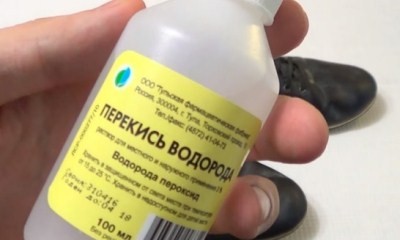 Discoloration of yellow spots is carried out in this order:
Discoloration of yellow spots is carried out in this order:
- hydrogen peroxide and ammonia are mixed in a 1: 2 ratio;
- pour the prepared solution onto the yellow smudges;
- wait about a quarter of an hour;
- wipe the bath with a sponge or cloth;
- if necessary, the processing is repeated.
Acetic acid
For work, you need 9% table vinegar. If the contamination is weak, you can limit yourself to a weaker solution.
Cleaning is carried out as follows:
- Moisten a cloth, taken according to the size of the spot, in vinegar.
- Apply a "compress" to the contaminated area.
- Wait 1-2 hours until the yellowness is completely discolored.
- To prevent the napkin from drying out, it is periodically moistened with vinegar.
If the whole bath is covered with yellowness, then warm water is poured into it, 1-2 liters of vinegar are added and kept for 10-12 hours.
How to remove stains with special compounds?
The assortment of hardware stores offers a variety of specialty gels, liquids, and anti-rust and limescale powders.
Purifiers differ:
- composition,
- instructions,
- volume,
- at a price.
Unicum
The sanitary ware is intended for cleaning the bathroom. The spray is suitable for:
- ceramics,
- enamels,
- porcelain,
- become,
- plastic.
The formula of the product includes a mixture of organic acids, non-surfactants and perfume.
Apply liquid according to the instructions:
- Spray the bath spray from a distance of 20-25 cm.
- Maintain the full reaction time - 15-20 seconds.
- Wipe the area with a soft brush or napkin.
- Stubborn stains are re-treated with a holding time of up to 1 minute.
A 500 ml spray bottle costs an average of 500 rubles.
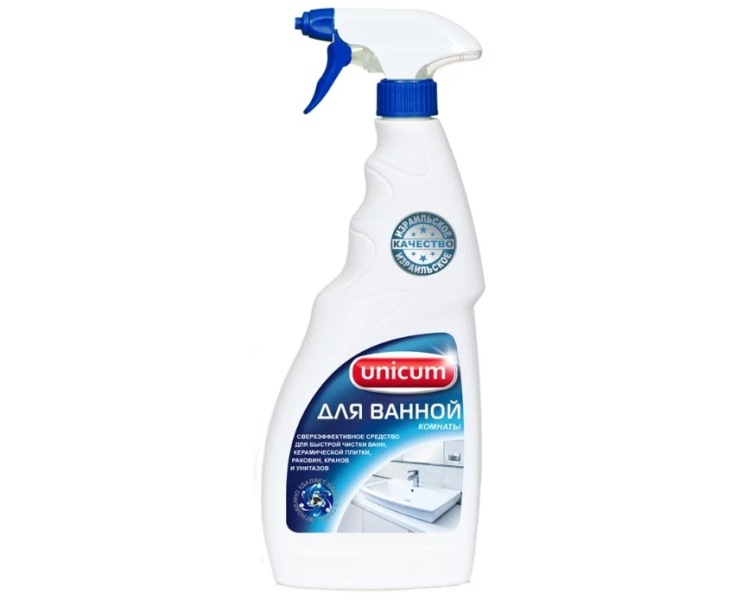
Mister chister
Acrylic bathtub cleaner helps to clean:
- yellowness
- rust
- limescale,
- fungus.
Gives the surface a shine, suitable for frequent washing:
- enameled,
- ceramic,
- acrylic,
- steel surfaces.
The composition includes:
- Nonionic surfactants,
- lemon acid,
- antibacterial component,
- perfume,
- preservative.
Plumbing cleaning is carried out according to the scheme:
- The spray is sprayed onto the contaminated area.
- Allow the product to react for 2-3 minutes.
- With strong yellowness, the exposure time is increased.
- Wipe the treatment area with a sponge or rag.
The average price for a standard 500 ml bottle is 160 rubles.
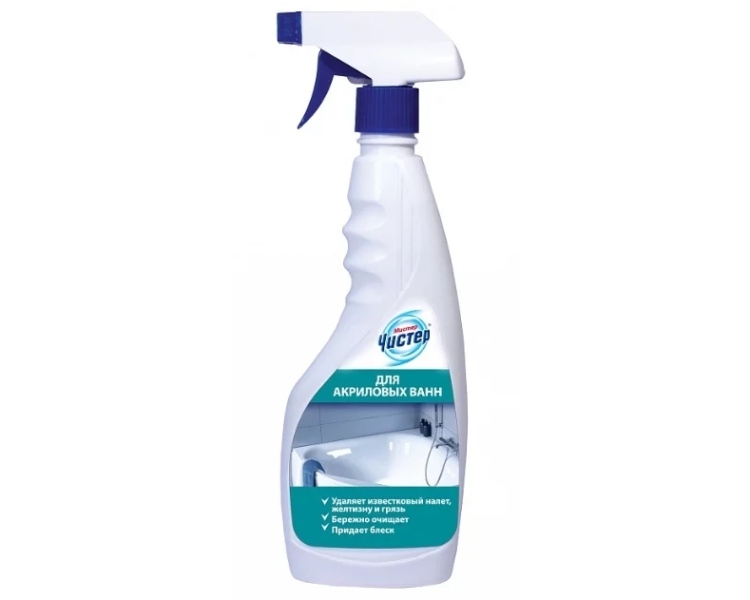
Bagi Akrylan
A universal remedy for rust, lime and fungus. Foam spray bleaches and disinfects sanitary ware surfaces from:
- enamels,
- acrylic,
- ceramics,
- chrome.
The active ingredients are nonionic surfactants, citric acid and solvents.
Instructions for use require compliance with the rules:
- Shake the foam bottle well.
- Moisten the surface to be treated with water.
- Spray Acrylane evenly on the stains.
- Leave the product on for 1-2 minutes.
- Wipe with a damp cloth or rinse with water.
A spray bottle (400 ml) costs about 420 rubles in online and offline stores.
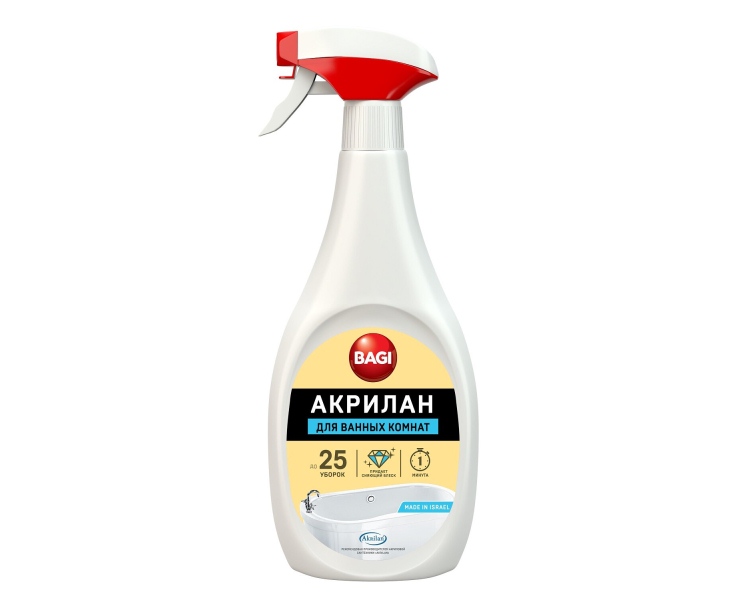
Features of cleaning depending on the type of coating
Modern bathtubs can be made of cast iron, steel, acrylic. In most cases, metal bowls are covered with enamel, which requires careful handling and cleaning.
Cast iron
It is advisable to wash baths of this alloy once a week. For normal hygiene procedures use a laundry soap or gel detergent... Cast iron bowls can be cleaned with mild acids (acetic, citric).
Acrylic
To maintain whiteness, plastic fonts are recommended to be cleaned with special agents no more than once every 10-14 days. For such baths, it is advisable to purchase gels and foams designed specifically for acrylic products.
Bowl made of polymer plastic do not rub with metal brushes, use alcohol or acids... Preventive washing is carried out with detergent gel or detergent powder.
Steel
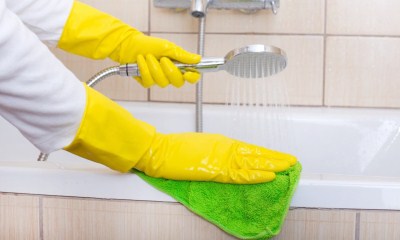 Bowls made of stainless steel, as well as cast iron, are covered with enamel. However, this layer is thinner and therefore more sensitive to the effects of cleaning agents.
Bowls made of stainless steel, as well as cast iron, are covered with enamel. However, this layer is thinner and therefore more sensitive to the effects of cleaning agents.
For whitening it is recommended to use soft tools (napkins, sponges, rags) and gentle products. It can be:
- weak acids;
- baking soda;
- ammonia;
- hydrogen peroxide.
Enameled
Glossy coating on a metal bowl requires regular washing, but special cleaning is carried out no more than once every 7 days. In this case, it is recommended to abandon strong acidic and chlorine-containing compounds, since their use can cause irreversible yellowing of the surface.
What cannot be used?
When cleaning the bath, remember that not all products and tools are universal. Some of them can harm enamel, acrylic or metal finishes.
So as not to spoil the plumbing during the removal of yellowness, it is recommended to exclude:
- Metal scourers and brushes. Rigid products leave scratches, and as a result, the bath will require redecoration.
- Strong acids and alkalis. These reagents can damage acrylics and enamel, thin the walls of a metal bath.
- Products intended for cleaning toilets. These gels contain aggressive ingredients that can damage the bath lining.
Helpful hints
To remove yellowness and further maintain the cleanliness of the font, it is important to remember useful recommendations:
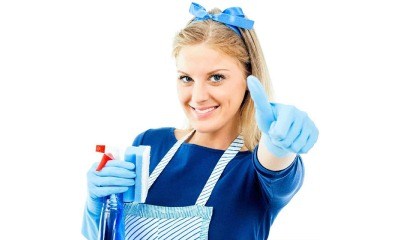 After each use, rinse the bathtub with warm water, then wipe it dry with a soft cloth.
After each use, rinse the bathtub with warm water, then wipe it dry with a soft cloth.- Gloves should be worn when using any sanitary ware to protect the skin from irritation.
- Before removing yellowness using household chemicals, you need to turn on the forced exhaust in the bathroom.
- The final stage of any cleaning with a special tool is rinsing the bath with water and wiping it dry with a napkin.
- Do not put metal cans and bottles on the sides of the bathtub, as rusty marks may remain from them.
- It is necessary to keep the mixer in good condition, as constantly dripping or flowing water leaves a persistent smudge.
All the most important and useful information about bathroom cleaning is collected in this section of the site.
Related videos
How to whiten a bath with soda and citric acid, the video will tell you:
Conclusion
Removing yellowness on the bath is an unpleasant but solvable problem. To remove stains and smudges, use improvised home recipes or special household chemicals. When using each product, you must follow the instructions, consider the material of the bath, remember important warnings and tips.

